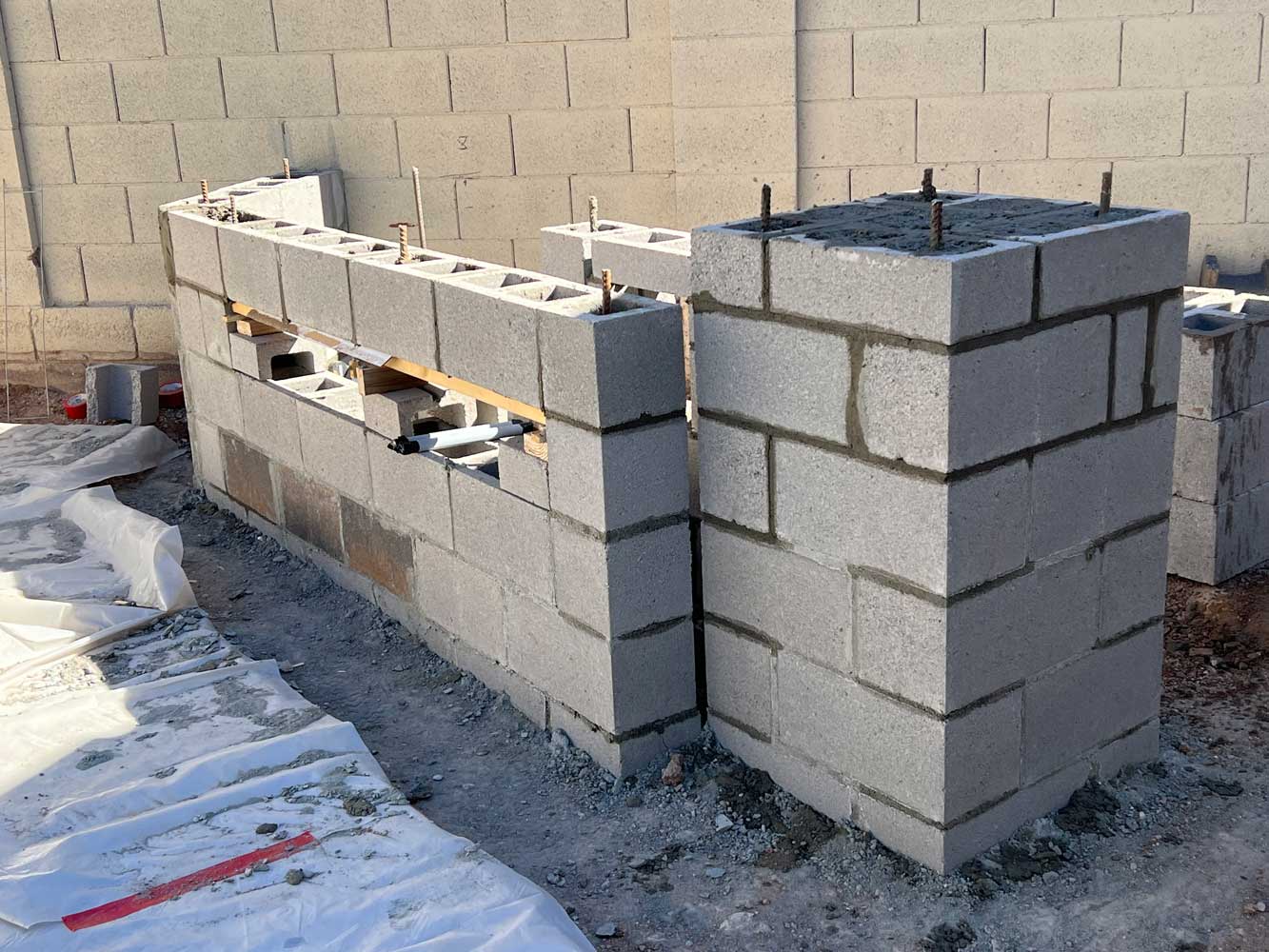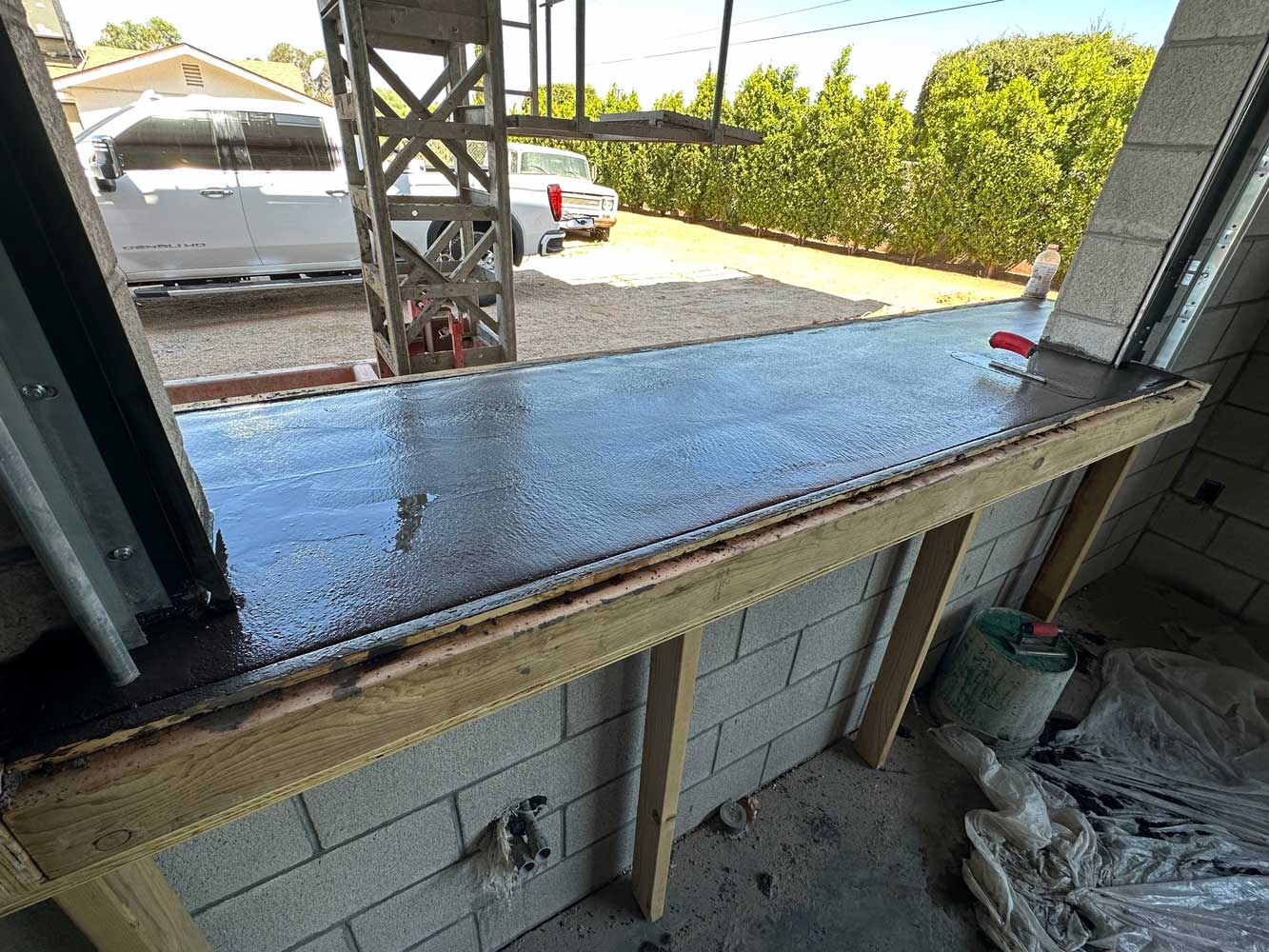Tuckpointing, a Specialized Masonry Technique
Tuckpointing is a specialized masonry technique that involves removing deteriorated mortar from the joints between bricks or stones and replacing it with fresh mortar. This process not only restores the structural integrity of the masonry but also enhances its visual appeal. In Phoenix, Arizona, where the desert climate can accelerate mortar deterioration, tuckpointing is essential for maintaining the longevity and aesthetics of brick structures.
Understanding Tuckpointing
Tuckpointing plays a crucial role in preserving the integrity, functionality, and appearance of masonry structures, addressing several key factors that significantly impact their lifespan and value. First, the replacement of deteriorated mortar enhances durability by preventing water infiltration. Water is one of the most destructive forces for masonry, as it can seep into cracks, weaken the underlying structure, and lead to long-term damage such as erosion, mold growth, or freeze-thaw cycles in colder climates. By sealing these gaps with fresh mortar, tuckpointing safeguards the masonry against these issues, ensuring its structural stability for years to come. Additionally, tuckpointing dramatically improves aesthetics. Over time, crumbling mortar and uneven joints detract from the visual appeal of a brick or stone structure. Tuckpointing restores the clean, crisp lines between bricks or stones, reviving the original beauty of the structure and enhancing its overall appearance.

This restoration has a direct impact on property value, as well-maintained masonry increases curb appeal and gives potential buyers confidence in the property’s upkeep. Beyond visual and structural benefits, tuckpointing also contributes to energy efficiency. Properly sealed mortar joints prevent drafts and air leaks, creating a tighter building envelope that reduces heat loss during colder months and limits the entry of hot air during warmer months. This helps maintain consistent indoor temperatures, lowering energy costs and improving the comfort of those inside. These benefits underscore the importance of tuckpointing as both a preventative and restorative measure that protects the investment in masonry structures while elevating their value and functionality. Tuckpointing addresses these issues by:
- Removing Damaged Mortar: Carefully extracting the deteriorated mortar from the joints without damaging the surrounding masonry units.
- Applying New Mortar: The cleaned joints are filled with new mortar that matches the original in composition and color, ensuring a seamless repair.
- Creating Fine Lines: Thin lines of contrasting mortar, known as fillets, are added to give the appearance of narrow, precise joints, enhancing the overall aesthetic.
This laborious process not only improves the appearance of the masonry but also reinforces its structural stability.
Benefits of Tuckpointing
- Enhanced Durability: Replacing deteriorated mortar prevents water infiltration, which can cause significant damage over time.
- Improved Aesthetics: Tuckpointing restores the crisp lines between bricks or stones, revitalizing the structure’s appearance.
- Increased Property Value: Well-maintained masonry contributes to the overall value and curb appeal of a property.
- Energy Efficiency: Properly sealed mortar joints help in maintaining indoor temperatures by reducing drafts and heat loss.
Removing damaged mortar is a critical step in the tuckpointing process because it directly impacts the structural integrity, aesthetic appeal, and longevity of masonry structures. Here’s why this step is so important:
1. Prevents Further Deterioration
- Stops Water Penetration: Cracked or deteriorated mortar creates gaps in the masonry, allowing water to seep into the structure. Over time, this can lead to internal damage, such as mold growth, wood rot, or even frost damage in colder months when water freezes and expands.
- Halts Structural Weakening: Mortar serves as the glue that holds bricks or stones together. If it’s compromised, the entire structure is at risk of becoming unstable or collapsing.
2. Restores Bonding Strength
- Damaged mortar loses its ability to properly bond masonry units. Removing it ensures that the new mortar adheres directly to the bricks or stones, creating a strong, cohesive bond.
- Without proper removal, new mortar applied over old, crumbling mortar won’t bond effectively, leading to weak joints and an increased likelihood of failure.
3. Prevents Accelerated Damage
- Compounded Erosion: If damaged mortar isn’t removed, the surrounding masonry units are exposed to weathering. Rain, wind, and temperature changes can erode the edges of the bricks or stones, causing more extensive repairs later.
- Prevents Embedded Debris Issues: Leaving deteriorated mortar in place can trap dirt, salts, and other contaminants, which may further weaken the masonry or cause unsightly staining over time.
4. Ensures Proper Adhesion of New Mortar
- New mortar needs a clean surface to properly adhere to the bricks or stones. By removing all loose and crumbling material, the replacement mortar can create a tight, durable seal that lasts for decades.
- Improper removal can result in weak points in the joint, compromising the repair and reducing the overall effectiveness of the tuckpointing.
5. Maintains Aesthetic Consistency
- When removing damaged mortar, care must be taken not to damage the surrounding masonry units. Proper removal ensures the bricks or stones maintain their original shape and alignment, preserving the structure’s appearance.
- Cleanly prepared joints allow for precise application of new mortar, achieving a uniform and professional look that blends seamlessly with the existing structure.
6. Protects Energy Efficiency
- Gaps in mortar joints allow air drafts to penetrate the building, reducing energy efficiency by making it harder to maintain consistent indoor temperatures. Removing damaged mortar and replacing it with fresh, well-applied mortar creates a weather-tight seal.
7. Prolongs the Lifespan of the Structure
- Neglecting to remove damaged mortar can lead to cumulative damage, ultimately requiring costly repairs or even reconstruction. Proper removal as part of regular tuckpointing maintenance extends the lifespan of masonry structures by addressing problems early and comprehensively.
By prioritizing the careful removal of damaged mortar, homeowners and contractors ensure that subsequent repairs are both effective and durable, protecting the structure for years to come. This step is essential for maintaining the integrity and value of any masonry structure.
Tuckpointing in Phoenix, Arizona
Phoenix’s unique climate, characterized by intense heat and occasional monsoons, can accelerate the wear and tear on masonry structures. These conditions make regular maintenance, including tuckpointing, crucial for preserving the integrity of brick and stone edifices.
Local companies, such as New Era Masonry, specialize in providing tuckpointing services tailored to the specific needs of Arizona’s environment. They emphasize the importance of matching new mortar to the existing material to maintain the structure’s original look and ensure durability.
 Choosing a Tuckpointing Professional
Choosing a Tuckpointing Professional
When selecting a tuckpointing service in Phoenix, consider the following:
- Experience: Look for companies with a proven track record in masonry restoration and tuckpointing.
- Local Expertise: Firms familiar with Arizona’s climate can recommend the best materials and techniques for long-lasting repairs.
- Quality Materials: Ensure the use of high-quality mortar that matches the original in both appearance and composition.
- References and Reviews: Check client testimonials and past projects to gauge the quality of work.
Conclusion
Tuckpointing is an essential maintenance practice for masonry structures, especially in Phoenix’s demanding climate. By addressing mortar deterioration promptly, property owners can prevent extensive damage, enhance the beauty of their buildings, and maintain or even increase property value. Engaging with experienced local professionals ensures that the tuckpointing process is performed correctly, providing lasting benefits for years to come.

